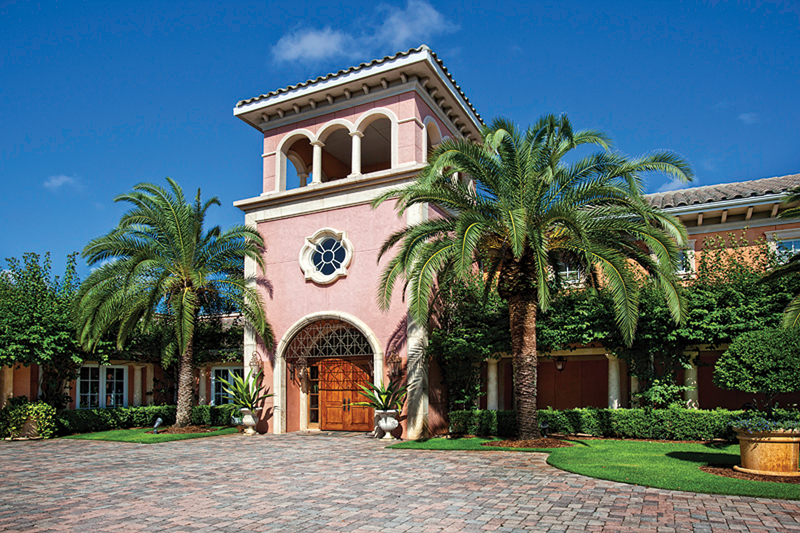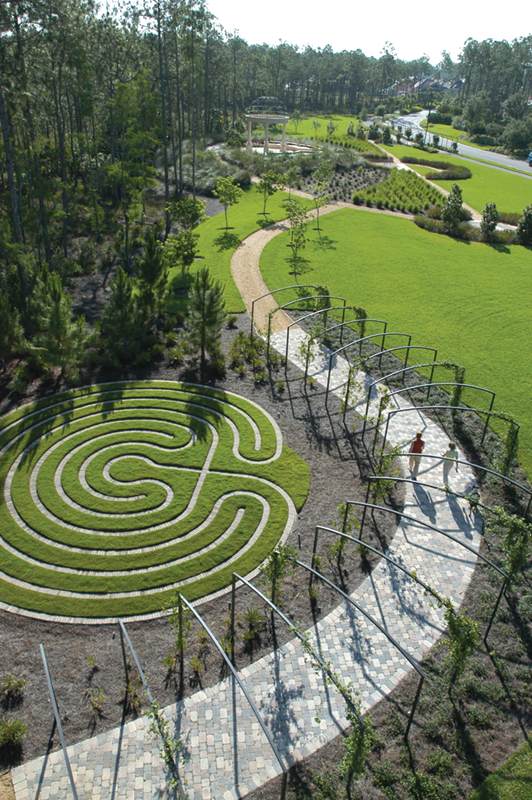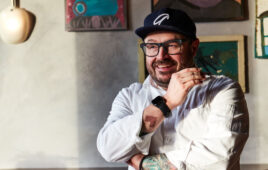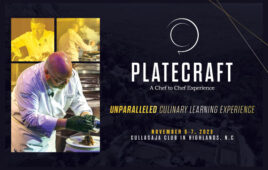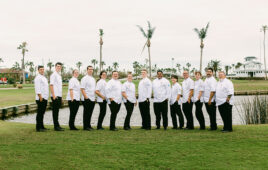Executive Chef Tyler Field has guided The Club at Mediterra’s culinary program to new levels through a steady diet of inventive programs and a nurturing management approach.
The Club at Mediterra, in Naples, Fla., opened in 2001. It was created with the intimacy, charm and classic style of the Mediterranean region of Europe. With 36 holes of Tom Fazio championship golf, The Club at Mediterra, featured as C&RB’s cover story in May 2012 (“Well-Groomed Approach”), has been an anchor for what has been named the “Community of the Year” in Collier County, Fla., seven times.
The very special amenities at The Club at Mediterra include its dining facilities. Chef Tyler Field, CEC, has been the driving force of the F&B operation since 2012. Tyler came from Isleworth Country Club in Windermere, Fla., where he worked with his longtime mentor and friend, Russell Scott, CMC. Tyler was good enough to take some time to share insights gained from his experiences at two of Florida’s most exclusive clubs.
Tyler Field, CEC
CHEF PROFILE
Current Position: Executive Chef, The Club at Mediterra, Naples, Fla. (2012-Present)
Previous Experience:
- Chef de Cuisine, Isleworth Country Club, Windermere, Fla. (2005-2012)
- Teaching Assistant/Sous Chef at Culinary Institute of America for Certified Master Chef Russell Scott, Hyde Park, N.Y.
(2004-2005)
Education:
- AOS in Culinary Arts Management, Culinary Institute of America, Hyde Park, N.Y.
(2000-2002) - Bachelors of Professional Studies in Culinary Management, Culinary Institute of America, Hyde Park, N.Y. (2003-2004)
Awards and Accomplishments:
- 2014: Silver Medal, Florida Department of Agriculture Signature Shrimp Competition, Orlando, Fla.
- 2012: Gold Medal Winning Dish, Taste of Elegance Pork Competition, Orlando, Fla.,
- 2011: Awarded Certified Executive Chef designation through American Culinary Federation
Q Chef, to combat the typical “everyone eat at the same time!” club scenario, you have implemented a “fire pit small plate” menu concept at Mediterra. How has that worked out?
A The weather in Naples from October to May is paradise, and any reason to be outside is a good one. Before and after dinner, the Fire Pit Patio is alive with members mingling and relaxing.
With the takeoff of less-formal dining in the past few years, we saw an opportunity to do some small, fun food that would allow our very wine-focused membership to fully embrace the Fire Pit Patio concept. The menu was developed in a wine-focused way as well.
Mediterra’s Summer Kitchen connects to our Tavern on 18 and Fire Pit Patop, which were part of a recent club expansion. The Summer Kitchen has a woodstone oven and a small hot line where we produce hand-tossed pizzas and a menu of small plates. It takes some pressure off the kitchen that is servicing the main dining rooms, by providing the members who are looking for lighter, more casual fare with many more options in that realm than are on our more contemporary dinner menu.
Q You have a POS tracking system to help provide better service. How does it work, specifically in food and beverage?
A Our tracking system is one part POS and one part staff excellence. From the time a member drops off their car at the valet, their “timer” has already started. Time is one of the most valuable possessions in life, and we refuse to waste anyone’s time by not being ready for them.
We take notes at every stage of service, and those notes are translated into member preferences. There’s nothing groundbreaking about that—it’s the preparation, communication and anticipation before the service begins that makes all the difference.
Every day at pre-shift, we spotlight multiple members as a team. We review and quiz on their allergies, timing needs, specials, common special requests, who their guests are, what their idea of “medium rare” is—and more than anything else, how to exceed their expectations.
All of our expediter’s tickets are marked with course times and any notes that will help us better serve the member. Those tickets are matched with the tickets that start the member’s night, and stored through the season. Our hosts take drink orders after escorting the members to their table, and this ticket is given directly to the mixologist who prepares their beverage. The cocktails are delivered while the server is greeting the table, going over specials and taking orders to get the night started; there is no delay in the start of their night.
Q We all have battles with ourselves trying to avoid complacency. With your membership coming back for each season after having dined in some of the best restaurants around the world, this can be particularly challenging for you. What steps do you take to stay fresh and remain innovative?
A During the summer, the culinary team takes time to self-evaluate, reenergize and recommit to delivering an extraordinary experience to our members. To reenergize, we do a variety of activities. We compete in hot and cold food competitions. Many members of the staff are well on their way to some level of certification through the American Culinary Federation. We stage at independent restaurants and other clubs for the experience of seeing a different way, and of course to borrow a few tricks.

Recent expansions have enhanced the ability of members to enjoy F&B experiences throughout The Club at Mediterra property, and small-plate menus have been developed for outdoor dining occasions.
This past summer my sous chefs, Jim Tuckey and Brian Moll, were able to take classes with Rich Rosendale and Alex Talbot from “Ideas In Food.” We were able to use and implement what they had learned and teach the rest of the staff something new.
We also dine out together and are always looking for what separates a great dining experience from the good. And because some of the biggest influences today can come from Instagram and Twitter, the entire team is plugged into social media.
By far the thing that influences our menus the most is our brainstorming sessions. The entire team is invited; the only stipulation is participation. For some, thoughts come easily, but for anyone who has trouble developing the creative flow, I’ve come up with a cheat sheet that outlines what a successful dish might consist of. They can fill in the blanks until they start to see the connections between flavors, textures, fats, acid, etc.
The majority of our best dishes are usually a merging of two people’s ideas. We don’t experiment on the membership, but we do like to be a little unpredictable.
Q Tell us about the extremely successful “Weight Watchers” dining group that you’ve started.
A In the past few years, we really wanted to identify our culture and who we are as a club. We’re a relatively small club, but our membership is certainly one of the most elite, and their lifestyle is one of the major factors in helping us find that answer.
Carl Dill, our club President, and Thomas B. Wallace III, our former CEO, were instrumental in focusing the club in a direction to be one of the best clubs not only in southwest Florida, but the U.S. After running the data, we realized that our members place a huge emphasis on their health. The sports club and fitness center’s volume of business has not stopped increasing in recent years.
The Weight Watchers group was started in 2012 and became an immediate success. A large group of members attend the meeting and work the “Points Plus” and “360” systems. Identifying how that group of members and their spouses are now eating, we offer “Doctor’s Orders” dishes that are high in “zero point” food items and lean proteins. This helps the member stick to the program without having to search for an entrée that might be in their point range. At the same time, it’s been an opportunity for the culinary team to find new ways to increase the flavor, seasoning and all-around appeal of lower-calorie dishes.
Q Sometimes we forget to put ourselves in our cooks’ shoes and imagine what they are experiencing. You stress the importance of creating a learning environment for your staff. How do you do this?
A We really want to foster an environment of controlled failure and of not knowing everything. Some of the biggest “aha” moments are when a cook sees things go wrong, and you’re able to show them at what point that happened. Avoidable mistakes are another type of failure, and for those, we have zero tolerance.
For our younger cooks, we assign homework. Because most of them are infatuated with trendy techniques and superfluous ingredients, their homework usually consists of items from Escoffier or Larousse. Although we preach classics, we haven’t turned a blind eye to the modern.
Understanding trends and advancements in equipment are all just part of what makes the job interesting. Nothing is really off the table, but a healthy ratio of classic and modern is how we approach the cuisine here. We feel there is a time and place for everything.
We run a lot of classics on our banquet and buffet menus, as well as modernized versions of those dishes at our chef tables and wine dinners, and on our restaurant menus. We identify a handful of classic items that we would like to practice, and work them into the rotation so that we are able to refine and repeat them.
Last season, one item we focused on was “the Wellingtons”: Lamb, Pork, Beef, Tuna and Venison. Every time we made one of the chosen dishes, a demo took place and we talked about how to make it more perfect, or what alterations we could make to upgrade the dish. It definitely brings some confidence and pride to the team to work as a group on one task until everyone “gets it.”
To keep the team engaged and “thinking like owners,” we play “name that price” while coding invoices during cleanup at the end of the night. I’ll call out an item and whether it is priced per pound or by the case, and everyone gets one guess; closest to the price wins. It’s a real eye-opener for some; for others, it’s an exercise in being more aware of what it takes to run a successful kitchen.
We want to develop risk-takers and well-rounded cooks who aren’t afraid of trying new things. We challenge each other to make dishes we’ve never made before. Then we openly critique and discuss.
Today, I look at the team we’ve built at Mediterra and feel good that I’ve been lucky enough to pull passionate sous chefs and staff from around the country who are talented beyond their years. We genuinely like being around each other, and have fun while still working through the intensity of an extremely busy season.
I owe my team here all the best accolades; they are truly what makes this club a Platinum success. We’re also lucky to have an extremely supportive membership and a COO/GM, Carmen Mauceri, who has worked both sides of the house and really challenges the entire team to elevate the experience here in every way possible. I’m proud of the entire team and what we’re doing here at Mediterra—but in no way are we satisfied yet.
Q Finally, Chef, your mentor Russell Scott, whom you worked under both at the Culinary Institute of America in Hyde Park, N.Y. and at Isleworth Country Club, had a lasting impact on your career. What are the things that stand out among what you learned from this Certified Master Chef?
A I can’t say enough good things about Chef Russell Scott; he has been by far the greatest influence on the cook that I am today. It’s not easy to work for someone who has accomplished so much. He is the yardstick by which I measure my own accomplishments, so obviously I have a long, long way to go. “One bite at a time.”
In the early days it was all about the fundamentals. Later it was about respecting tradition and the classics while staying current. Nowadays we talk about ideas, the big picture, family and friends. He taught me to remain humble, be relentless, stay self-motivated and work like they’ll be giving out gold medals for everything you do. Every day is training for the exam, the next competition or the next interview. To maintain a commitment to cooking at the highest level, and to the refinement of every task.
When I accepted the position here at Mediterra, Chef Scott told me “It’s all about your team”—and he was right.
Recipes:
Roast Crepinette of Pork

